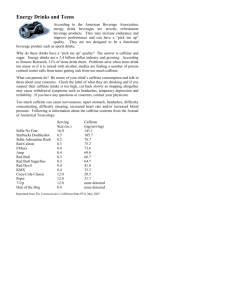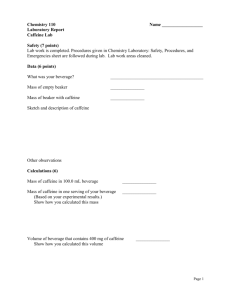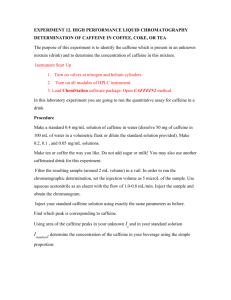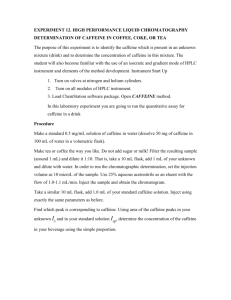Thermal Analysis of Caffeine
advertisement
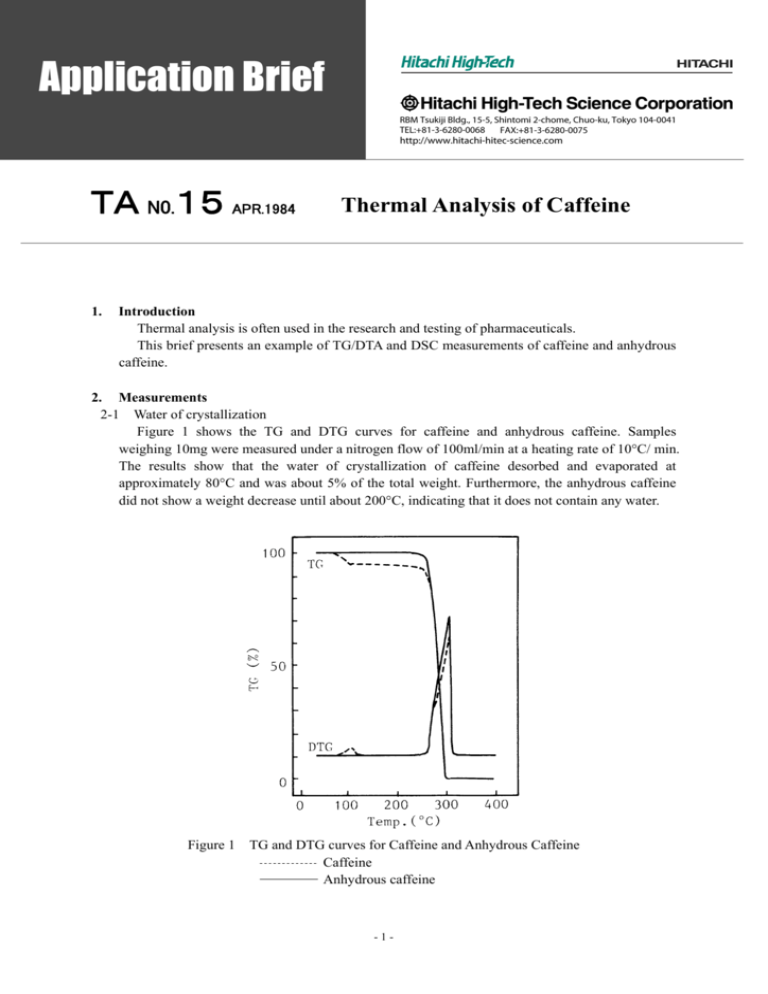
TA N0.15 APR.1984 1. Thermal Analysis of Caffeine Introduction Thermal analysis is often used in the research and testing of pharmaceuticals. This brief presents an example of TG/DTA and DSC measurements of caffeine and anhydrous caffeine. 2. Measurements 2-1 Water of crystallization Figure 1 shows the TG and DTG curves for caffeine and anhydrous caffeine. Samples weighing 10mg were measured under a nitrogen flow of 100ml/min at a heating rate of 10°C/ min. The results show that the water of crystallization of caffeine desorbed and evaporated at approximately 80°C and was about 5% of the total weight. Furthermore, the anhydrous caffeine did not show a weight decrease until about 200°C, indicating that it does not contain any water. Figure 1 TG and DTG curves for Caffeine and Anhydrous Caffeine Caffeine Anhydrous caffeine -1- Figure 2 and Figure 3 show the DSC results for caffeine and anhydrous caffeine when measured in an open container and a sealed container, respectively. The sample weights were approximately 3mg and the heating rate was 10°C/min. In the open container results in Figure 2, there are peaks at 78°C and 86°C corresponding to the desorption and evaporation of the water of crystallization for the caffeine. The results in Figure 3 show an endothermic peak at 78°C, even though the container was sealed to control the evaporation of water. These results indicate that the 78°C peak for caffeine in Figure 2 is due to the desorption of water of crystallization and the 86°C peaks are due to the evaporation of the water. 2-2 Melting In Figure 2, caffeine and anhydrous caffeine show an endothermic peak at 236°C due to melting. At the same time, the TG curve in Figure 1 shows a decrease in weight around the melting point. These results indicate that water continues to rapidly evaporate as the caffeine melts. The anhydrous caffeine showed a melting peak at 236°C for both the open and sealed conditions but the caffeine melting peak in the sealed condition was smaller and occurred at a lower temperature than the open condition. Likely, the water of crystallization that desorbed from the caffeine remained in the sealed container and this affected the crystal structure of the caffeine. Figure 2 Open Container DSC Results Caffeine Anhydrous caffeine Figure 3 -2- Sealed Container DSC Results Caffeine Anhydrous caffeine




